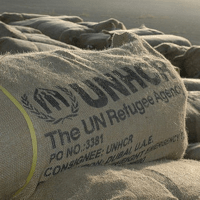One of the most complex and difficult humanitarian problems confronting the international community today is that of protracted refugee situations. These are refugee situations that have moved beyond the emergency phase, but where solutions in the foreseeable future do not exist. Many of the refugees left behind in these situations have to live under terrible conditions, warehoused in camps or stuck in shanty towns, exposed to dangers, and with restrictions placed upon their rights and freedoms.
I first became aware of the significance and dimensions of the contemporary problem of prolonged exile in 2001, after a brief visit to the Somali refugee camps around Dadaab, in northern Kenya. At the time, these were among the most violent camps in the world. Somali refugees had been contained in these camps since the early 1990s, and they complained that they were invisible to the international community. There appeared to be no end in sight to their predicament. Unfortunately, the situation in Dadaab has changed little since 2001, as Somalia itself has virtually collapsed in the midst of renewed chaos and killing. The camps' population has increased from some 125,000 at the time of my visit to almost 300,000 today.
There are dozens of Dadaabs in the world today. The United Nation's refugee agency, the U.N. High Commissioner on Refugees, defines a protracted refugee situation as one in which "refugees find themselves in a longstanding and intractable state of limbo," and in which "their basic rights and essential economic, social and psychological needs remain unfulfilled after years in exile." The office of the high commissioner identifies a major protracted refugee situation as one where refugees have been in exile for more than five years. Using this measurement, more than 5.5 million people, or well more than half of refugees in the world today, are in extended exile. There exist some 25 protracted refugee situations in at least 21 different countries around the world. All of these situations are in the developing world, where 80 percent of the world's refugees reside.

